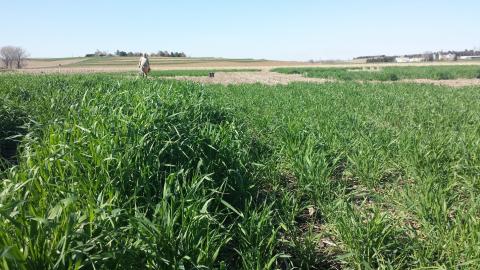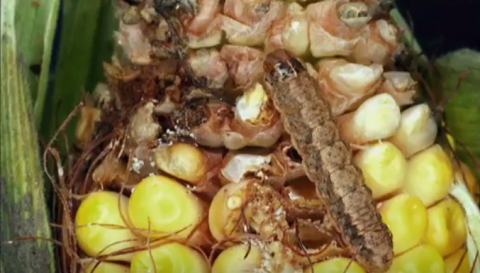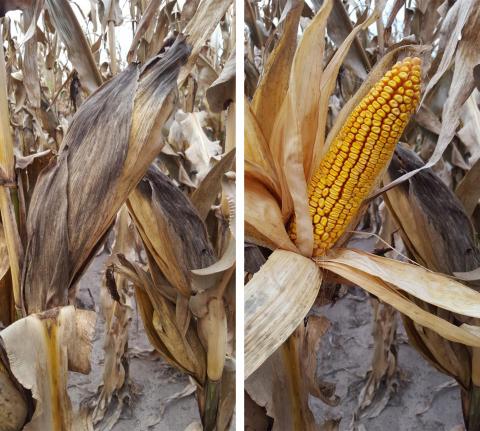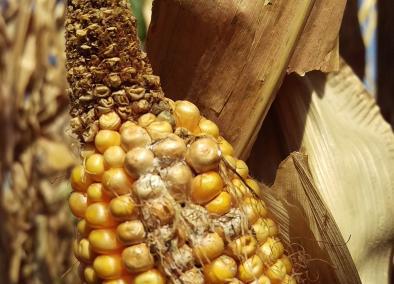Implementation of Cover Crops in Corn and Soybean Systems in Nebraska
November 29, 2016
A short review of cover crop research conducted at four University of Nebraska research fields (two irrigated, two dryland) to study the feasibility and impact of winter cover cropping on soil quality, soil water, and crop yields in corn-soybean systems. Objectives were to quantify cover crop emergence, fall and spring biomass production, soil water changes, soil chemical and physical property changes, and crop yields.
Can you hear the corn grow? Yes!
November 29, 2016
The sound corn emits while growing is surprisingly similar to the sound of breaking corn, such as during greensnap, and may help scientists develop stronger, more resilient corn plants.
Forage, Feed, and Grazing Restrictions for Row Crop Herbicides
November 1, 2016
As the end of corn harvest nears, some producers will soon be turning their cattle into corn stalks or cover crops to graze. Before taking this step, take time to review the labels from in-season and fall-applied herbicides for any grazing restrictions.
Researchers Seek Feedback on 2016 Corn Forecasts
October 28, 2016
Researchers contributing to the Corn Yield Forecast Center in 2016 are seeking your feedback.
Nebraska Perspective on Efficacy of Cry1F Bt Corn Against Western Bean Cutworm
October 21, 2016
While entomologists in the Eastern Corn Belt this month reported reduced efficacy of the Cry1f Bt protein against western bean cutworm in corn, Nebraska growers have been facing this for several years. While Cry1F products will still help control other pests, growers are advised to scout for WBC and determine whether treatment is necessary.
What's Causing Black "Dusty" Corn?
October 14, 2016
What's that black dust that some growers are reporting at corn harvest? Plant Pathologist Tamra Jackson-Ziems discusses the cause
Harvest 2016 — When Corn Yields are Below Expectations
October 14, 2016
A review of 2016 growing conditions across Nebraska sheds light on a number of factors that may have contributed to reduced yield in individual fields. An understanding of these factors may be helpful when selecting seed for 2017.
Ear and Stalk Rot Diseases Becoming More Common in Corn Fields
October 13, 2016
Ear rot diseases have been observed and stalk rot diseases are becoming increasingly common. It’s important to scout for stalk rot diseases now to determine which fields are at greatest risk of lodging and should be harvested first. Although it is unknown if ear rot diseases are widespread, it’s also important to scout for ear rot diseases to know how to better handle affected grain at harvest to prevent or minimize impacts on grain quality.






